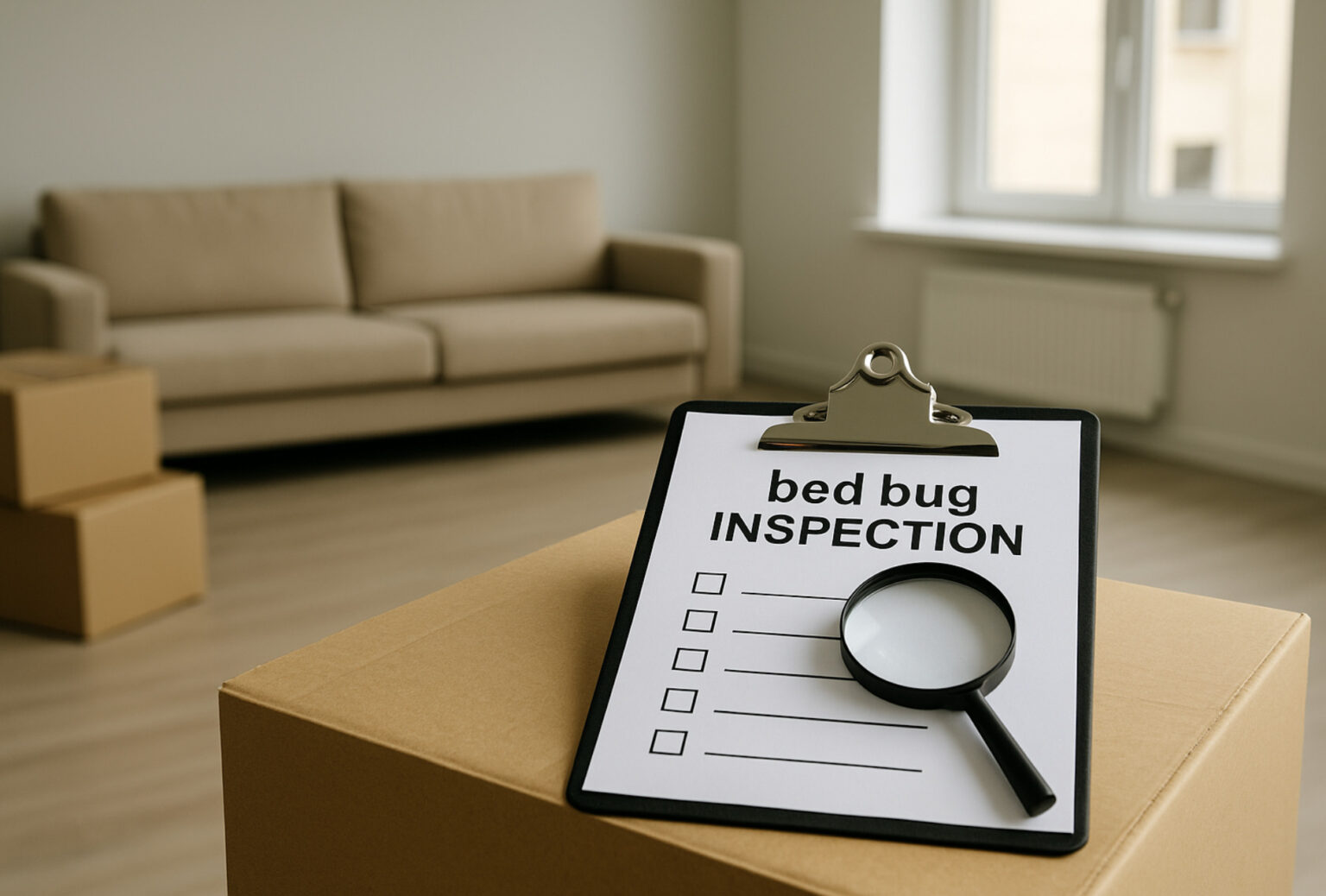Before moving into a new apartment, one essential step is often overlooked: making sure the unit is free of bed bugs. These pests are extremely difficult to eliminate once established, and an early inspection can save you time, money, and stress. This guide explains how to schedule a professional bed bug inspection before moving in—and what to check yourself to avoid unexpected infestations.
Table of Contents
- Why You Should Inspect for Bed Bugs Before Moving
- How to Schedule a Professional Bed Bug Inspection
- What Inspectors Look For During a Pre-Move Inspection
- Signs of Bed Bugs You Can Check Yourself
- What to Do If Bed Bugs Are Found Before Moving
- Preventing Bed Bugs During the Moving Process
- Summary Table: Steps for a Pre-Move Bed Bug Inspection
- FAQ
1. Why You Should Inspect for Bed Bugs Before Moving
Moving into a new apartment without verifying its condition exposes you to a hidden risk: bed bugs from previous tenants. These pests can survive for months without feeding and may hide deep in cracks, outlets, or wall voids. A pre-move inspection helps you:
- Avoid bringing bed bugs into your belongings
- Prevent costly extermination
- Ensure the landlord takes responsibility before move-in
- Start your tenancy in a clean, safe environment
More resources on bed bugs:
➡️ https://www.freezit.fr/punaises-de-lit/
2. How to Schedule a Professional Bed Bug Inspection
Here is the step-by-step method to book an inspection before signing the lease or moving your belongings:
Step 1: Ask the landlord for permission
Most landlords accept inspections, especially if you pay for it. You’re fully entitled to request one before moving in.
Step 2: Contact a certified pest control company
Choose a provider specializing in bed bug detection. Many offer pre-move assessments tailored to rentals.
Step 3: Request an appointment before move-in day
Ideally 3–7 days before moving so that you have enough time to react if the results are positive.
Step 4: Ask for a detailed report
The inspection should include:
- evidence found,
- risk level,
- recommended treatments,
- zones requiring monitoring.
Step 5: Confirm who is responsible for treatment
If bed bugs are found before you move in, responsibility usually falls on the landlord.
Learn more about moving safely and avoiding pest transfer:
➡️ https://www.freezit.fr/demenagements/
3. What Inspectors Look For During a Pre-Move Inspection
Professional inspectors will check:
- Mattress seams (if furnished)
- Bed frames, headboards, and slats
- Baseboards and wall cracks
- Electrical outlets and switch plates
- Closets and storage areas
- Under carpets or rugs
- Sofa frames (if furnished)
- Ventilation areas and wall joints
They may also use:
- detection dogs,
- monitoring traps,
- heat or steam tools to inspect deep areas.
A high-quality inspection is thorough and takes 30–90 minutes depending on apartment size.
4. Signs of Bed Bugs You Can Check Yourself
Even before the official inspection, do a quick walkthrough to check for:
Visible signs
- Small black dots (fecal stains)
- Brown shells or shed skins
- Tiny white eggs in cracks
- Live bed bugs (flat, brown, apple-seed size)
Odor
A sweet, musty smell in heavily infested rooms.
Suspicious furniture
Old headboards, wooden slats, or second-hand sofas may hide bed bugs.
5. What to Do If Bed Bugs Are Found Before Moving
If the inspection finds evidence of bed bugs:
1. Don’t move in yet
Bringing your belongings into an infested unit puts everything at risk.
2. Ask the landlord to treat the unit
They must use professional extermination, not DIY sprays.
3. Request proof of treatment
Certificates, invoices, or written confirmation.
4. Re-inspect after treatment
A follow-up ensures the infestation is fully resolved.
6. Preventing Bed Bugs During the Moving Process
Even if the apartment is clean, bed bugs can come from movers, storage units, or old furniture.
To stay safe:
- Use new or sealed moving boxes
- Avoid picking up free furniture from the street
- Keep clothes in sealed bags until fully unpacked
- Freeze sensitive items at –20°C for 72 hours if you suspect exposure
- Inspect your moving truck before loading
7. Summary Table: Steps for a Pre-Move Bed Bug Inspection
| Step | Action | Goal |
|---|---|---|
| 1 | Ask landlord for permission | Legal clarity |
| 2 | Book with a certified inspector | Professional detection |
| 3 | Visit the unit before moving | Early identification |
| 4 | Review report | Know the level of risk |
| 5 | Request treatment if needed | Ensure a clean start |
| 6 | Protect belongings during move | Avoid contamination |
8. FAQ – Bed Bug Inspection Before Moving
Do landlords have to let me inspect for bed bugs?
In most regions, yes. Pre-move inspections are common and reasonable.
When should I schedule the inspection?
3–7 days before moving is ideal.
Who pays for the inspection?
Usually the tenant pays, but the landlord covers treatment if bed bugs are detected.
Can I detect bed bugs myself?
You can spot signs, but professional inspections are far more reliable.
Should I cancel a move if bed bugs are found?
Not necessarily—ask for treatment and a follow-up inspection.
 Xylophage
Xylophage Puces
Puces Anthrènes
Anthrènes


